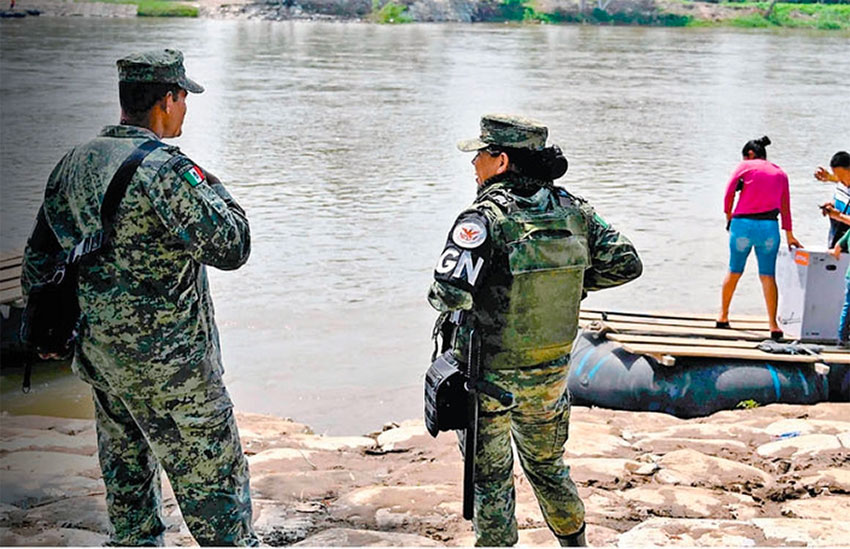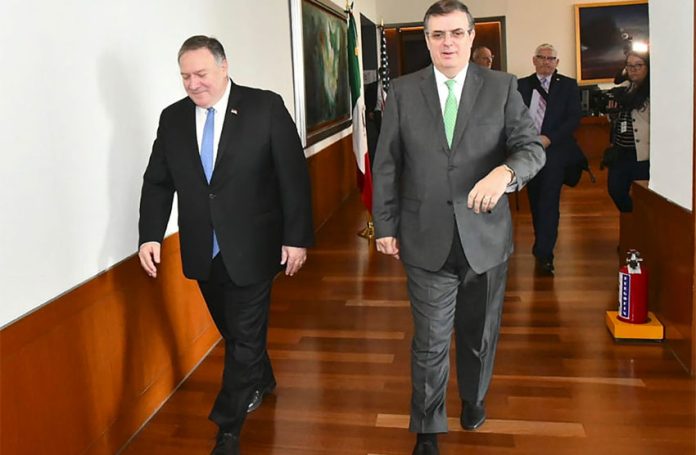More than 43,000 undocumented migrants were detained in the first 42 days after Mexico and the United States reached a migration agreement that ended President Donald Trump’s threat to impose blanket tariffs on Mexican goods.
According to preliminary data, Mexico stopped 43,279 migrants between June 8 and July 19, an average of 1,030 arrests per day.
The daily detention rate is 88% higher than that recorded between January and May when there was an average of 547 arrests per day.
Deportations have also increased since the June 7 agreement was signed. The National Immigration Institute said that 21,912 migrants were repatriated last month, the highest single month figure since the new government took office last December.
As part of the pact, Mexico agreed to deploy 6,000 National Guard troops to the southern border to step up enforcement against undocumented migrants.
The government also agreed to an expansion of the so-called “Remain in Mexico” policy, meaning that it will accept the return of all migrants seeking asylum in the United States as they await the outcome of their claims.
Around 10,000 migrants have already been returned to Baja California under the policy and shelters in the state are at 90% capacity as a result, according to government secretary Francisco Rueda.
On June 24, the government announced that almost 15,000 federal security force members had been deployed to the northern border to contain illegal migration flows into the United States.
Foreign Affairs Secretary Marcelo Ebrard said today that the number of migrants crossing into the U.S. from Mexico has decreased 36% since the June 7 pact was signed.
Ebrard, who held talks with United States Secretary of State Mike Pompeo in Mexico City yesterday, said that the success in reducing migration flows to the U.S. had allowed Mexico to avoid having to negotiate the implementation of a safe third country agreement.
A supplementary agreement to the June 7 pact said that if the United States decided after 45 days that Mexico was not achieving the desired results in stemming migration, the government would “take all necessary steps” to implement such an agreement.

In a statement, the Secretariat of Foreign Affairs said that Ebrard told Pompeo that Mexico will continue to implement the same migration strategy over the next 45 days. The two men will meet again in Washington at the beginning of September.
Critics of the stricter enforcement of immigration policy, including Catholic bishops, have argued that Mexico is turning itself into President Trump’s long-promised border wall.
In addition to stepping up enforcement against undocumented migrants, the Mexican government is betting that investment in development in Central America and southern Mexico will help curb migration.
The government announced in June that it will provide US $30 million for a reforestation program in El Salvador and this month it said that a similar plan will go ahead in Honduras.
Citizens of those two countries and Guatemala have made up the bulk of the members of several large migrant caravans that have entered Mexico since late last year.
Mexico and the United States agreed in December to work on a US $35.6-billion development plan in southern states and the Northern Triangle countries of Central America.
As part of the plan, the U.S. government this month committed to mobilizing public and private investment of more than US $500 million in southern Mexico to create jobs and stimulate development.
Source: Milenio (sp), El Financiero (sp)
